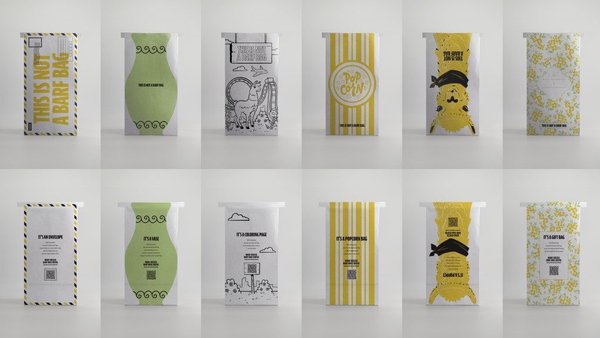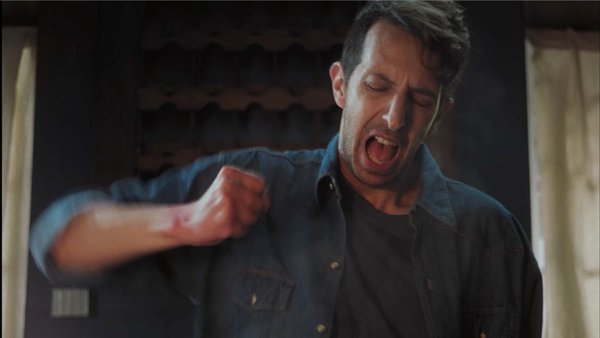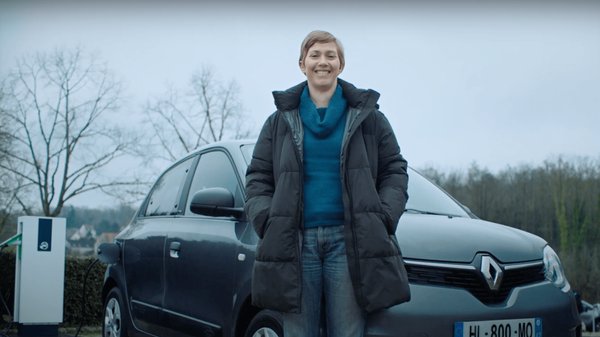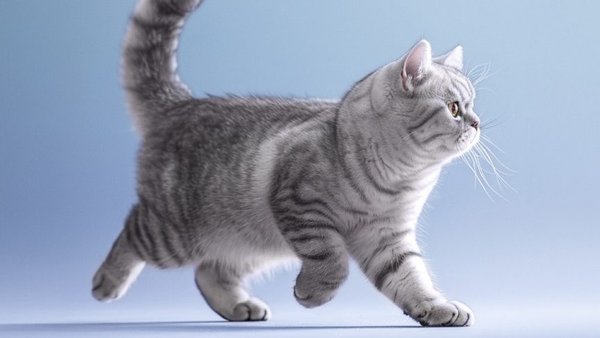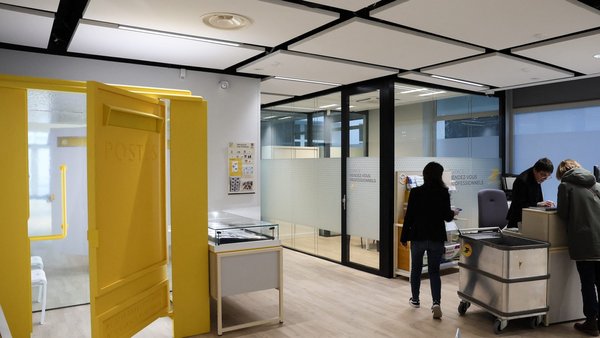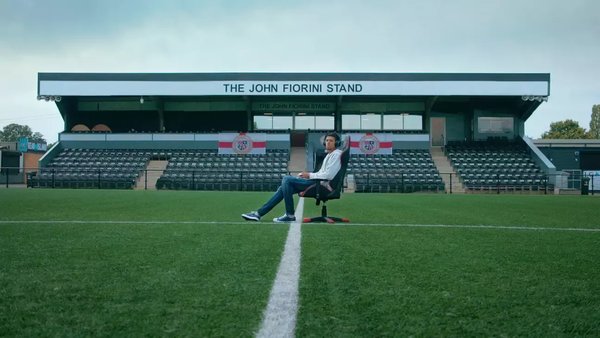Campaign of the Week
McDonald’s flipped its logo as a nod to its anime analogue /
Fast food chain rebranded as ‘WcDonald’s’, in recognition of its portrayal in Japanese manga comics and anime cartoons
Since the 1980s, Japanese cartoons (anime) and comics (manga) have included fast food brand McDonald’s Golden Arches in their media. But to avoid legal trouble, it became a tradition for studios and artists to flip the McDonald’s iconic logo upside down, creating the WcDonald’s restaurant in the process.
In February 2024, McDonald’s finally embraced its fictional counterpart for the WcDonald’s promotion, which features a limited-edition chilli sauce and a 10-piece Chicken WcNuggets meal, bagged up in manga-themed brown paper packaging designed by internationally renowned manga and comic book artist Acky Bright.

Live across 30 markets, the campaign ran from 26 February to 18 March and was created by Wieden+Kennedy New York.
McDonald’s kicked off the campaign on 20 February with a 15-second anime trailer posted on its official Instagram page teasing the 26 February. The next day, the brand shared a five-second video of its logo changing from the Golden Arches into the logo for the fictional restaurant and renamed its account to WcDonald’s.
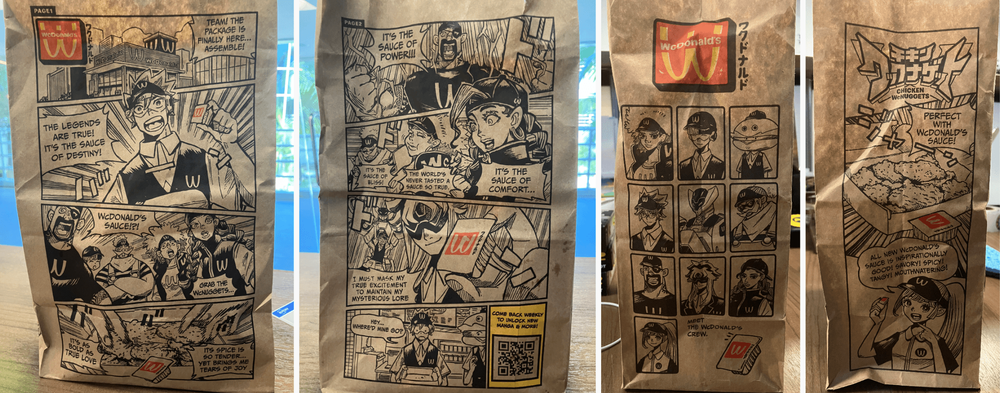
The promotion was further supported by a four-part WcDonald’s manga, created in partnership with Acky Bright. Additionally, McDonald’s partnered with Studio Pierrot, the Japanese studio famous for globally iconic anime such as Naruto, Bleach and Tokyo Ghoul, to launch a four-part WcDonald’s anime series. Each of the WcDonald’s anime episodes is 30 seconds long and is inspired by a traditional anime genre – action, romance, mecha (giant robots) and fantasy.
McDonald’s and Studio Pierrot also worked with Japanese singer and songwriter Reol to launch an animated music video on McDonald’s official YouTube page. The song, ‘Want U Luv It’, was also released on Spotify, YouTube Music, Apple Music and Amazon Music.
McDonald’s released one anime episode and one manga on each Monday over the campaign period. The content can be accessed either by scanning a QR code on the themed packaging, through the McDonald’s app, or via a dedicated WcDonald’s website. The anime will also be available to view on McDonald’s YouTube channel.
Additionally, the brand created a virtual WcDonald’s in Fortnite where people could team up with characters from the WcDonlad’s anime and manga to overcome challenges. McDonald’s also launched a physical WcDonald’s restaurant in Los Angeles, which featured a set menu of WcDonald’s food accompanied by entertainment inspired by each episode of the WcDonald’s anime.

Finally, McDonald’s is offering a grant to three up-and-coming anime artists who have created WcDonald’s-themed art. The money will provide project funding and a one-to-one mentoring session with Acky Bright.
Contagious Insight /
People first / The WcDonald’s campaign is further proof that McDonald’s new approach to marketing is paying off. The brand not only understands culture and its fans, it knows its iconic stature. But for brands who don’t have the same status or budgets as the fast food chain, it might seem the only takeaway here is to just be more like McDonald’s. Not so. The learning here is that McDonald’s put its audience and their passions at the heart of its marketing strategy. Getting to this point wasn’t easy, back in 2018 the brand was losing market share thanks in part to stale and rational advertising. Reversing this required a fresh approach to marketing, which is no easy thing to do, and you can read about the wider marketing transformation the brand has gone through in our brand spotlight here.
In our spotlight, Jennifer Healan, VP of marketing, brand content and engagement for McDonald’s US, summarised the new approach as ‘we now talk fan to fan – that’s the pivot’. That people-first strategy means McDonald’s can continuously find opportunities to create campaigns that are rooted in people and their passions.
One piece / It makes sense for McDonald’s to want to find a way to align with anime. After all, it boasts an incredibly passionate young audience that spans the globe. But successfully connecting with such an audience means doing more than a simple promotional campaign for a limited-edition sauce, it means showing them that your brand gets ‘it’.
Which is exactly what McDonald’s did. The brand didn’t just acknowledge the presence of its inverted logo in anime and manga, McDonald’s went all out in bringing WcDonald’s to life. Each campaign touch point is crafted to show this audience that McDonald’s cares just as much about anime and manga as they do. The name and logo change on Instagram, the WcDonald’s products, the packaging, all of that takes significant effort and commitment. The collaboration with Studio Pierrot, Acky Bright and Reol in particular takes WcDonald’s to the next level – McDonald’s understands this culture, who moves it forward, and gets what ‘it’ is.
Playing around / Even if McDonald’s wasn’t responsible for the initial twist on the logo, the campaign is still a bold flex at how iconic its distinctive assets are – whichever way you see those Golden Arches, you know it’s McDonald’s.
The brand knows how to lean into this: its out-of-home Lights On campaign saw only half a golden arch used to promote the brand’s delivery service, while the Raise Your Arches campaign, created by Leo Burnett, had no overt McDonald’s branding, but proved so successful in the UK that it was adapted for 34 additional territories. ‘You’re taught as marketers to diligently protect your distinctive assets and grow them over time consistently,’ Joe Beveridge, strategy director at Leo Burnett, told Contagious. ‘Once you’ve reached the heights of McDonald’s you can stretch and have fun with your distinctive assets.’
Want more of the same? /
We don’t just write about best-in-class campaigns, interviews and trends. Our Members also receive access to briefings, online training, webinars, live events and much more.

